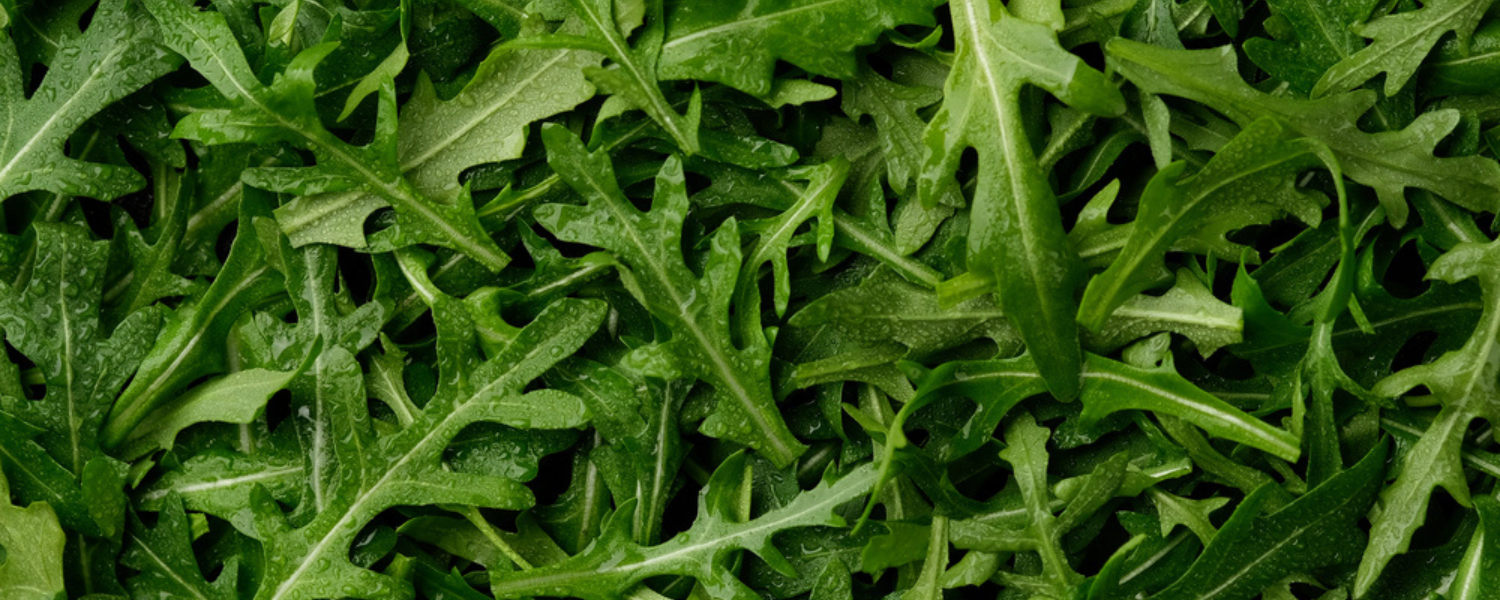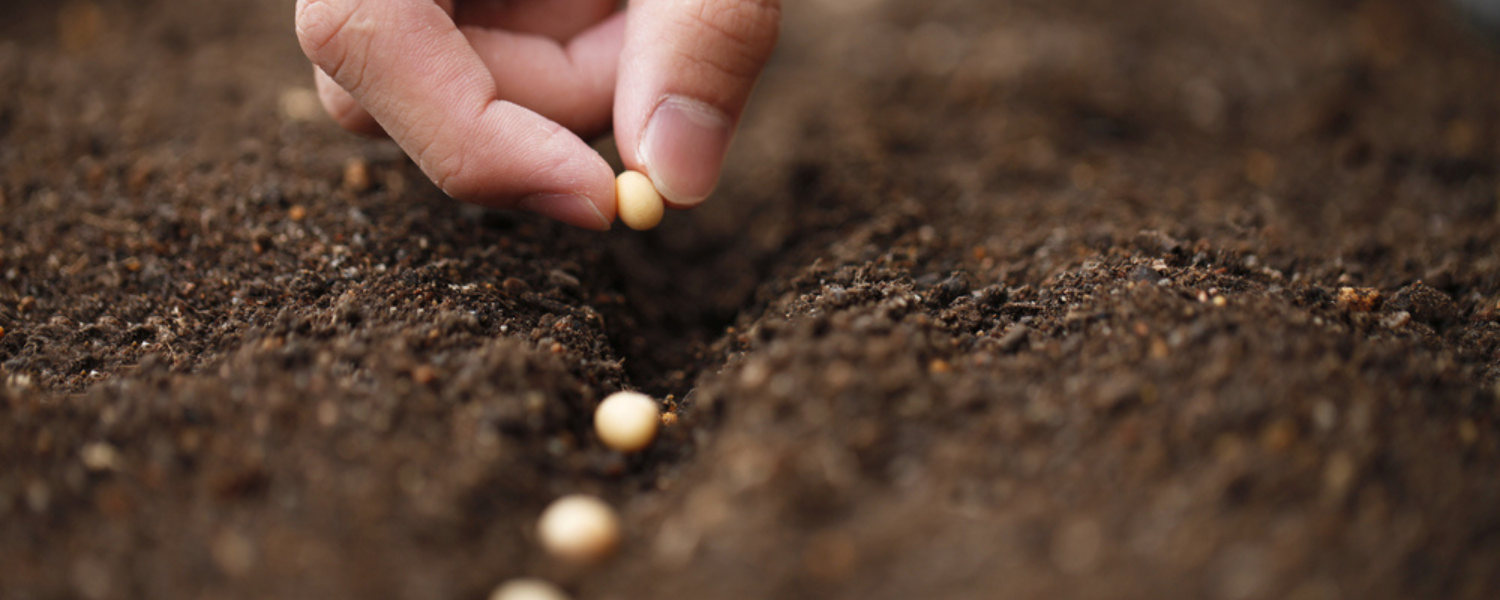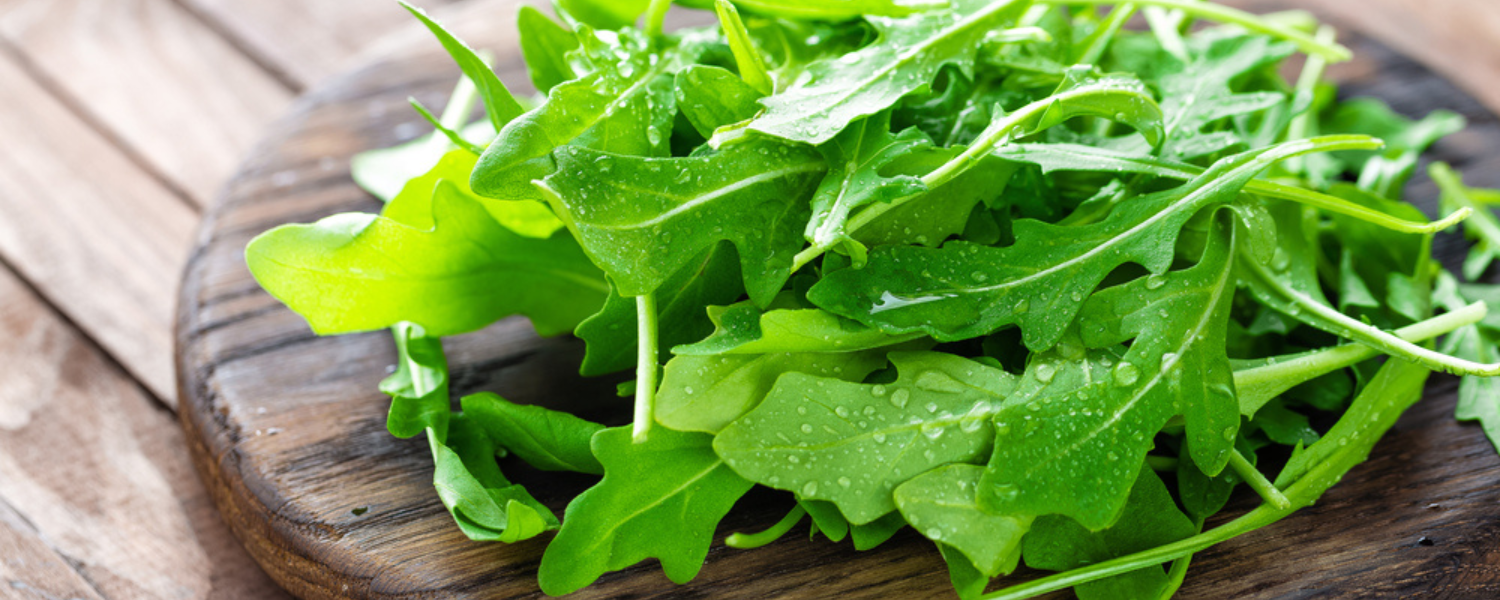Arugula, also referred to as "rocket" or "roquette", is a leafy green that grows quickly in chilly climates and gives salads an acidic, mustard-like flavor. Arugula is indigenous to Europe's drier regions, particularly Italy and the Mediterranean region, as well as Turkey and western Asia.
It is a relative of other familiar garden plants like cabbage, broccoli, and kale and is a member of the Brassicaceae family, which also includes mustard. Because it grows quickly and has a stronger flavor than most greens, arugula is frequently used in salads to add flavor.
Six to eight weeks after sowing, you can harvest young leaves if you plant in the early spring or early fall. Although seedlings may tolerate a mild frost and the seeds will germinate fast in chilly soil, you should still think about covering plants with frost blankets or row covers.

Growing Conditions For Arugula
Light & Temperature
Full daylight, or at least six hours of direct sunshine most days, is ideal for arugula growth. Additionally, it thrives in partial sun, particularly in warm areas. But offer some midday shade as the temperature starts to increase. Arugula prefers a temperature range of 45 to 65 degrees Fahrenheit.
Although it can endure frost, it dislikes the intense summer heat. By sheltering it from the sun and covering it from freezes, you can somewhat lengthen the growing season for arugula. However, planting it at the correct periods is the best course of action. It does not require high humidity and, as long as it receives enough water, can thrive in arid areas.
Soil
The best conditions for arugula plants are well-drained soil and a pH range from slightly acidic to neutral. They can grow in a wide range of soil types but prefer a loam that is nutrient-rich. Arugula prefers loose, well-drained soil with a pH between 6.0 and 7.0.
Water
Arugula needs routine irrigation for healthy development and ideal flavor, just like many other vegetables. Its root system is thin. Water as soon as the top inch of soil feels dry, keeping the soil continuously moist but not waterlogged.
This means watering every morning in arid conditions. If you don't water your plants on a regular basis, the plants will probably bolt and the flavor of the leaves will be ruined.
Nutrients & Fertilizer
Your arugula shouldn't require additional feeding as long as you put it in soil that is high in nitrogen. Pale leaves are a sign of malnutrition. Before planting, incorporate compost into your soil to improve it.

How To Plant & Grow Arugula
Arugula is relatively easy to grow, and can be planted in both spring and fall. When planting arugula, it is important to choose a location that receives full sun. The soil should be well-drained and rich in organic matter. Follow these steps to grow your own arugula:
- Choose a sunny spot in your garden or in a pot on your patio.
- Prepare the soil by loosening it with a shovel and adding some compost.
- Sow the seeds directly in the soil, spacing them about an inch apart.
- Water the seeds regularly, making sure the soil stays moist but not soggy.
- Thin the seedlings to about 6 inches apart once they have sprouted.
- Harvest the arugula leaves when they are about 4 inches long.
Growing arugula is a pretty simple process that even beginner gardeners can handle with ease. In just a few short weeks, you could be enjoying the peppery taste of your very own home-grown arugula!
How To Harvest Arugula So It Keeps Growing
Because of its rapid growth rate, arugula can be harvested multiple times throughout the growing season. To ensure that your arugula plants keep producing, it is important to harvest them properly. When harvesting arugula, cut the leaves at their base, taking care not to damage the plant.
When harvesting arugula, cut the leaves about 1-2 inches above the ground. By leaving a bit of stem, the plant will continue to grow and produce new leaves. Arugula can be harvested every 2-3 weeks to ensure a continuous supply of fresh greens.
It is also important to remove any yellow or brown leaves, as these can indicate disease or pests. After each harvest, water the plants well and fertilize them according to your schedule. With proper care, your arugula plants will keep producing throughout the growing season.

Storing Arugula
When it comes to storing arugula, the most important thing is to keep the leaves dry. If they are allowed to stay wet for too long, they will quickly develop mold and become inedible. One way to keep the leaves dry is to store them in a loose, paper bag in the refrigerator.
Be sure to check the bag regularly and remove any wilted or discolored leaves. Another option is to rinse the leaves and spin them dry in a salad spinner. Then, place them in a plastic bag with a few small holes punched in it. The holes will allow air to circulate and prevent the leaves from getting soggy. Whichever storage method you choose, be sure to use the arugula within a few days for best results.
Common Arugula Pests & Diseases
Pests
Like all plants, arugula is susceptible to pests and diseases. Some of the most common arugula pests include aphids, caterpillars, and flea beetles. While these pests can cause damage to the leaves of the plant, they are usually not fatal.
More serious problems can occur if the roots of the plant are attacked by nematodes or other root-dwelling insects. Luckily, there are a number of ways to control arugula pests. One of the simplest methods is to encourage beneficial insects such as ladybugs and lacewings, which will help to keep the population of destructive pests in check.
Another effective control method is to remove affected leaves from the plant as soon as possible. This will help to prevent the spread of disease and limit the amount of damage that can be done. With a little effort, it is possible to keep arugula plants healthy and free from pests.
Plant Disease
Unlike some other greens, arugula is relatively easy to grow, and it is often used as a beginner's plant. However, arugula is susceptible to a number of diseases, which can cause problems for both novice and experienced gardeners alike. The most common disease that affects arugula is downy mildew.
This fungal infection causes the leaves of the plant to develop a white, powdery growth. Downy mildew can be controlled with the use of fungicides, but it is important to catch the disease early. Another disease that can affect arugula is root rot. This condition occurs when the roots of the plant are exposed to excessive moisture, which can cause them to decompose.
Root rot is difficult to treat, and it often leads to the death of the plant. Gardeners who suspect that their arugula plants are suffering from disease should consult with a qualified professional for diagnosis and treatment options.

Review: How To Grow Arugula
Arugula is a leafy green vegetable that belongs to the mustard family. It has a slightly bitter, peppery flavor and is often used in salads or as a garnish. Arugula is a fast-growing plant, and it is easy to grow arugula from seed. In fact, many gardeners prefer to direct sow arugula seeds rather than starting them indoors.
Arugula prefers cool weather, so it is often one of the first vegetables to be planted in the spring. However, it will bolt (go to seed) in hot weather, so it is best to sow arugula seeds every few weeks from spring through early summer. Arugula grows best in full sun but will tolerate partial shade.
It prefers rich, well-drained soil and should be watered regularly. Once plants are established, they are relatively drought tolerant. Harvesting arugula is easy – just cut leaves as needed when they are 3-6 inches long. Arugula can also be harvested as baby greens by cutting the entire plant when it is 4-6 inches tall.
To prolong the harvest, consider planting arugula in succession or growing it in a container that can be moved to a shady spot if necessary. When grown in favorable conditions, arugula will provide an abundance of fresh greens all season long.

